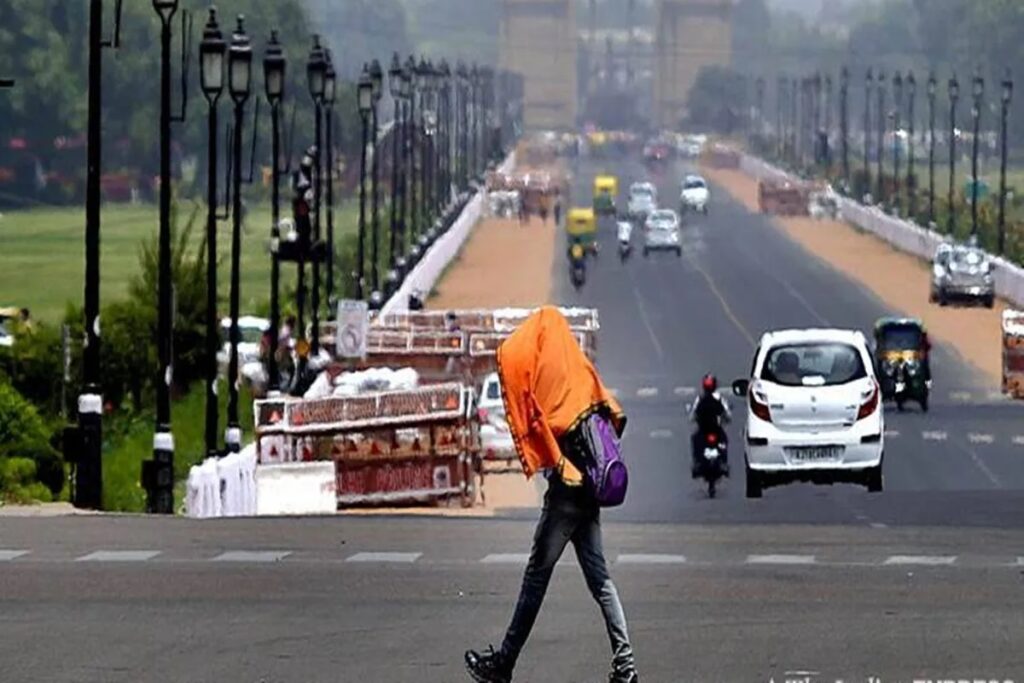
Is Delhi’s Temperature Really 52.9 Degrees? Chief of Weather Says, According to IMD Director General M Mohapatra, the India Meteorological Department( IMD) is examining the temperature detector at Delhi’s Mungeshpur automatic rainfall station to make sure it’s performing duly.
The temperature in India moment was52.9 degrees Celsius, according to this rainfall station. According toDr. Mohapatra, out of Delhi’s 20 monitoring stations, 14 have shown a drop in temperature, with an normal of 45 to 50 degrees Celsius observed throughout the megacity.
He claimed that the tape recording has to be vindicated and that the Mungeshpur station is a” outlier”. A thorough examination is necessary into the Mungeshpur recording, while some lookouts in Delhi had recorded a little advanced temperature.
According toDr. Mohapatra, a group of experts has traveled to Mungeshpur to check the temperature detector. He further conjectured that the high recording might be due to original variables in the Mungeshpur area. In different areas of Delhi NCR, the loftiest temperature ranged from45.2 to49.1 degrees Celsius.
A 52.9 degree Celsius reading from Mungeshpur was unusual compared to other stations. It can be the result of a original factor or detector error. latterly this evening, the IMD released a statement saying,” IMD is reviewing the data and detectors.” Minister of Earth lores Kiren Rijiju stated,” It’s not sanctioned yet. A52.3 degree Celsius temperature in Delhi is extremely unusual. We’ve requested our elderly IMD labor force to confirm the news report.
Soon, the sanctioned station will be made given.” India Meteorological Department( IMD) indigenous head Kuldeep Srivastava gave an explanation for the temperature increase, stating that hot winds from Rajasthan first affect the megacity’s outskirts. ” The early appearance of these hot winds can complicate the formerly bad rainfall in certain corridor of Delhi.
The first places to feel the full mass of these scorching winds are Mungeshpur, Narela, and Najafgarh, he told news agency PTI. On this alternate day of unknown heat, the temperature was over nine degrees Celsius advanced than prognosticated and had risen above the 2002 record of49.2 degrees Celsius. On
Wednesday night, there was also a brief rain in Delhi, which is presumably going to increase the moisture. Although India is oriented to scorching summer temperatures, times of scientific study have revealed that heatwaves are growing longer, further frequent, and more violent due to climate change.
Also read: Ayurveda advises against these 7 improper food pairings.


As further and further people turned on their energy- ferocious air conditioners during the heatwave, the nation’s capital recorded its each- time high power consumption of 8,302 megawatts( MW), according to electricity department authorities. There have also been reports of exceptionally high temperatures in Phalodi, Rajasthan, which is a desert state, with 51 degrees Celsius, and50.8 degrees Celsius, independently.50.3 degrees Celsius were recorded at Sirsa in Haryana.
\Due to wettish wind irruption from the Arabian Sea, a drop in temperature of over to 4 degrees Celsius has been observed throughout the sections of south Rajasthan, including Barmer, Jodhpur, Udaipur, Sirohi, and Jalore. This indicates the launch of the heatwave drop over northwest India.
According to numerical rainfall vaticination( NWP) data, which forecasts unborn rainfall by recycling current rainfall compliances through computer models, this declining trend is anticipated to continue northward, delivering a gradational break from scorching conditions starting on May 30. likewise, a progressive drop in the maximum temperature over Uttar Pradesh is anticipated due to the appearance of sticky winds from the Bay of Bengal starting on Thursday.











































































































































































































































































































































































































































































































































































































































































































































































































